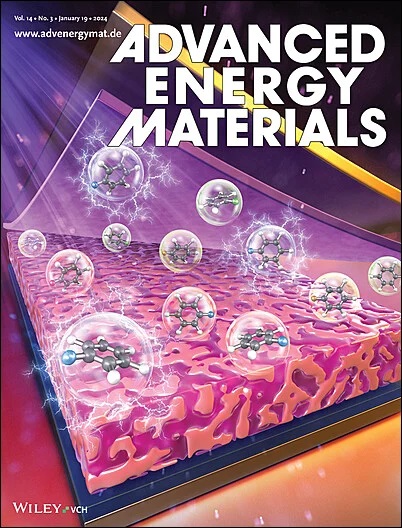Proactive Lithium Dendrite Regulation Enabled by Manipulating Separator Microstructure Using High-Fidelity Phase-Field Simulation
IF 24.4
1区 材料科学
Q1 CHEMISTRY, PHYSICAL
引用次数: 0
Abstract
Separator microstructure manipulation is a promising and universal solution to undesirable dendrite growth in Li batteries, which can be operative at the very beginning of electrodeposition. However, the relationships between dendrite morphology, Li+ distribution and separator microstructures remain unclear. The traditionally believed two-phase system of electrode and electrolyte is also extended to three- or four-phase system with separator matrix and the generally accompanied coating nanoparticles, adding extra difficulties to the rational design of separators. Here, this study proposes a quantified separator microstructure manipulation strategy by reconstructing a high-fidelity phase-field model for multi-phase systems, in which the effective Li+ diffusion coefficient and electric conductivity are coupled with dynamic multi-phase evolution. Separators within the scope of experimental modification (i.e., 40–50% porosity, inner-pore roughness of 1.5–2.7, and multi-layer structure) are predicted effective for dendrite regulation, indicating the feasibility of the proposed strategy. It is further revealed that the uniformity of coating nanoparticles plays a more significant role in dendrite regulation than the commonly suggested uniformity of separator matrix. By filling the gap between separator microstructure, Li+ distribution and Li dendrite morphology, this research paves the way for proactive lithium dendrite regulation regardless of specific battery system.

利用高保真相场模拟操纵隔膜微观结构实现锂枝晶的主动调节
对于锂电池中出现的枝晶生长不良现象,隔膜微观结构操作是一种前景广阔的通用解决方案,可在电沉积开始时就进行操作。然而,枝晶形态、Li+分布和隔膜微结构之间的关系仍不清楚。传统上认为的电极和电解液两相体系也被扩展为包括隔膜基体和一般伴随涂层的纳米颗粒的三相或四相体系,这给隔膜的合理设计增加了额外的困难。在此,本研究通过重建多相体系的高保真相场模型,提出了一种量化的分离器微结构操作策略,其中有效的 Li+ 扩散系数和电导率与动态多相演化相耦合。预计实验改造范围内的分离器(即孔隙率为 40-50%、内孔粗糙度为 1.5-2.7、多层结构)对树枝状晶粒的调节有效,这表明了所提策略的可行性。研究进一步表明,涂层纳米颗粒的均匀性在树枝状晶粒调控中的作用比通常所说的分离器基体的均匀性更重要。通过填补隔膜微结构、Li+分布和锂枝晶形态之间的空白,该研究为不受特定电池系统影响的主动锂枝晶调节铺平了道路。
本文章由计算机程序翻译,如有差异,请以英文原文为准。
求助全文
约1分钟内获得全文
求助全文
来源期刊

Advanced Energy Materials
CHEMISTRY, PHYSICAL-ENERGY & FUELS
CiteScore
41.90
自引率
4.00%
发文量
889
审稿时长
1.4 months
期刊介绍:
Established in 2011, Advanced Energy Materials is an international, interdisciplinary, English-language journal that focuses on materials used in energy harvesting, conversion, and storage. It is regarded as a top-quality journal alongside Advanced Materials, Advanced Functional Materials, and Small.
With a 2022 Impact Factor of 27.8, Advanced Energy Materials is considered a prime source for the best energy-related research. The journal covers a wide range of topics in energy-related research, including organic and inorganic photovoltaics, batteries and supercapacitors, fuel cells, hydrogen generation and storage, thermoelectrics, water splitting and photocatalysis, solar fuels and thermosolar power, magnetocalorics, and piezoelectronics.
The readership of Advanced Energy Materials includes materials scientists, chemists, physicists, and engineers in both academia and industry. The journal is indexed in various databases and collections, such as Advanced Technologies & Aerospace Database, FIZ Karlsruhe, INSPEC (IET), Science Citation Index Expanded, Technology Collection, and Web of Science, among others.
 求助内容:
求助内容: 应助结果提醒方式:
应助结果提醒方式:


